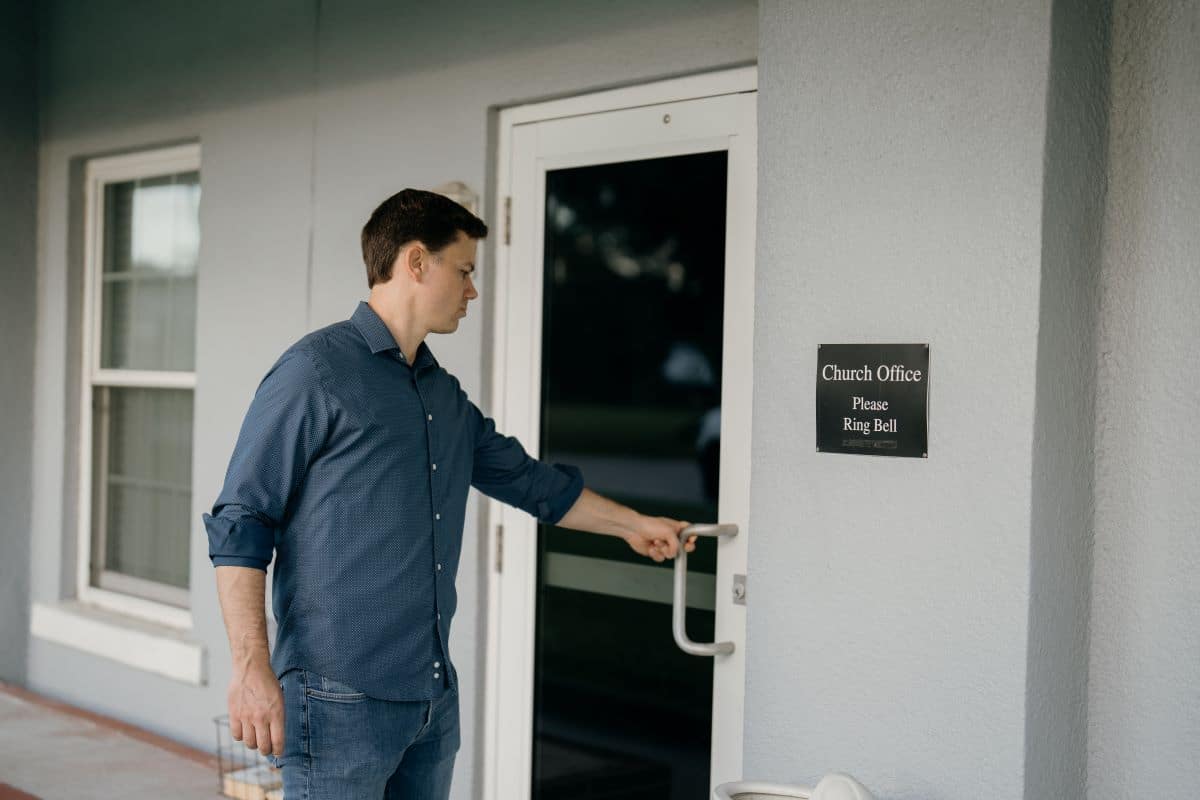As places of worship face unique safety challenges, creating a church security plan, and having the necessary tools, is essential to create a safe environment and protect your congregants. Whether your congregation meets in a church, synagogue, mosque, or temple, protecting your place of worship requires discussion, planning, training, and the right tools.
Here are six practical steps for church security.
- Conduct a church security self-assessment.
A church security self-assessment can help you find potential gaps or vulnerabilities in your current system and prioritize areas that need improvement. Completing this assessment can help you understand your facility’s strengths and weaknesses, which can, in turn, help you create a faith-based security strategy that addresses your unique needs.
- Create a church security and emergency plan.
Just as you should have a home emergency plan, every place of worship should have a written security and emergency operations plan tailored to their specific needs. A comprehensive church emergency response plan outlines procedures for managing threats, including active shooter, lockout, and shelter-in-place procedures.
- Train church staff, volunteers, and attendees.
Training is essential for faith-based community safety. Provide regular training for church security teams, staff, and volunteers on the emergency plan, including active shooter response and bomb threat procedures. Make sure all staff members understand what to look for and that they, as well as lead volunteers, have access to crisis response kits.
- Work with first responders.
Collaborating with police and fire departments can enhance faith-based security efforts. By working with first responders, your place of worship ensures that local emergency personnel are familiar with your building layout and specific safety needs. This collaboration greatly enhances your church’s ability to respond to critical incidents effectively.
- Implement a clear communication system.
A reliable mass notification system is vital in any church security plan. This system allows you to alert everyone in the building during emergencies, ensuring that congregants and staff are informed about the appropriate response actions. With an effective mass notification system, your church safety protocols will be stronger, keeping everyone informed and enhancing your community’s ability to respond swiftly.
- Review and update plans regularly.
Security for places of worship requires ongoing evaluation and improvement. Schedule annual reviews of your church security and emergency plans to ensure they remain relevant. Regular reviews allow you to incorporate feedback from safety drills and real-world experiences, ensuring your faith-based security measures are always up-to-date and effective.
Improving security for places of worship involves a proactive approach that combines assessment, planning, and training. Prioritize safety and preparedness within your faith-based community. Start by creating a church security checklist and make a commitment to regular training and review.
This information is courtesy of Premier Body Armor, which was founded in 2013 with the goal of protecting and empowering law enforcement and law-abiding citizens with innovative armor solutions, www.premierbodyarmor.com.





